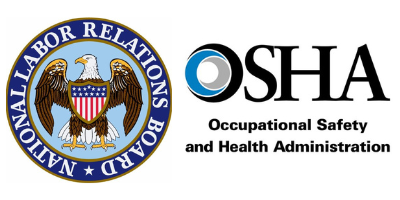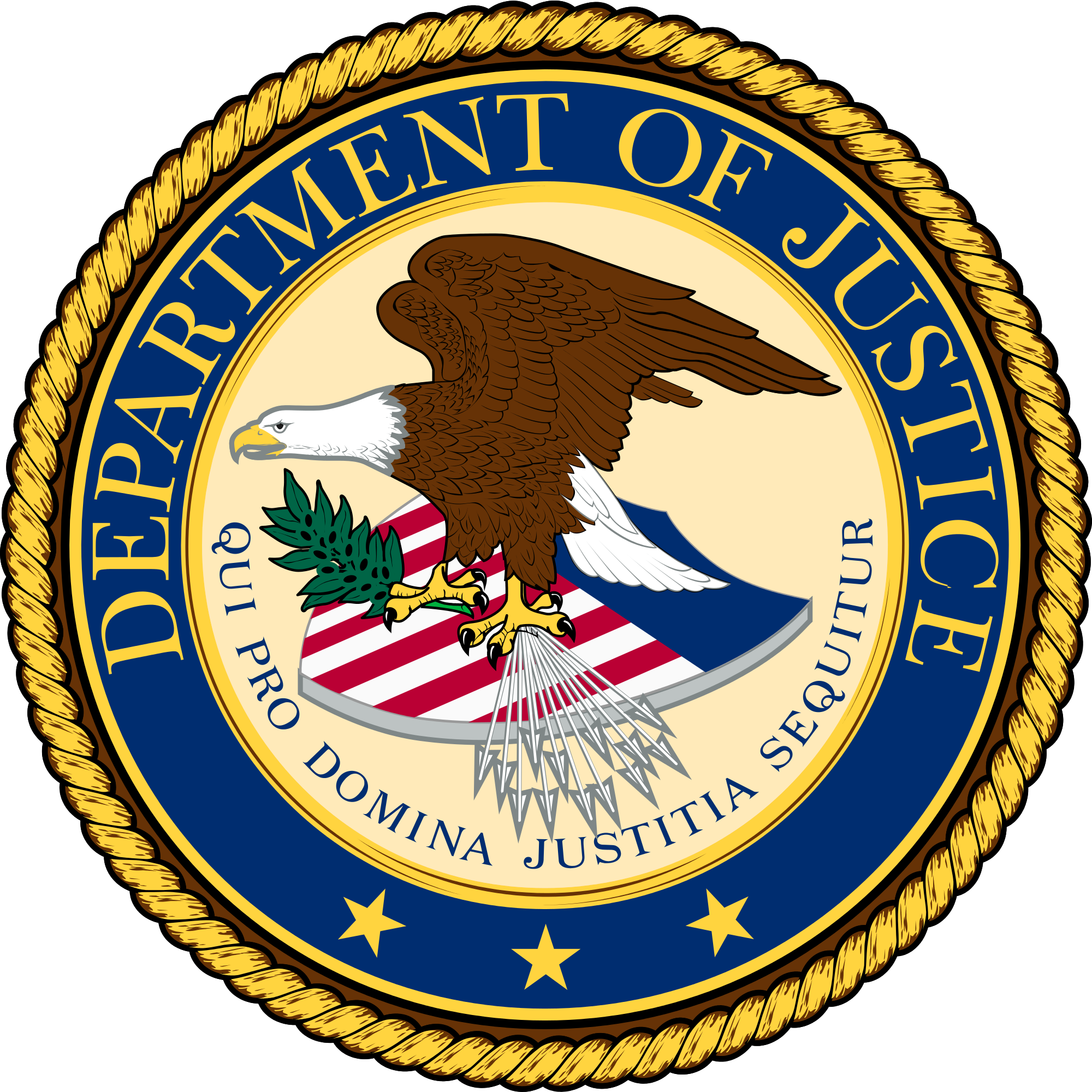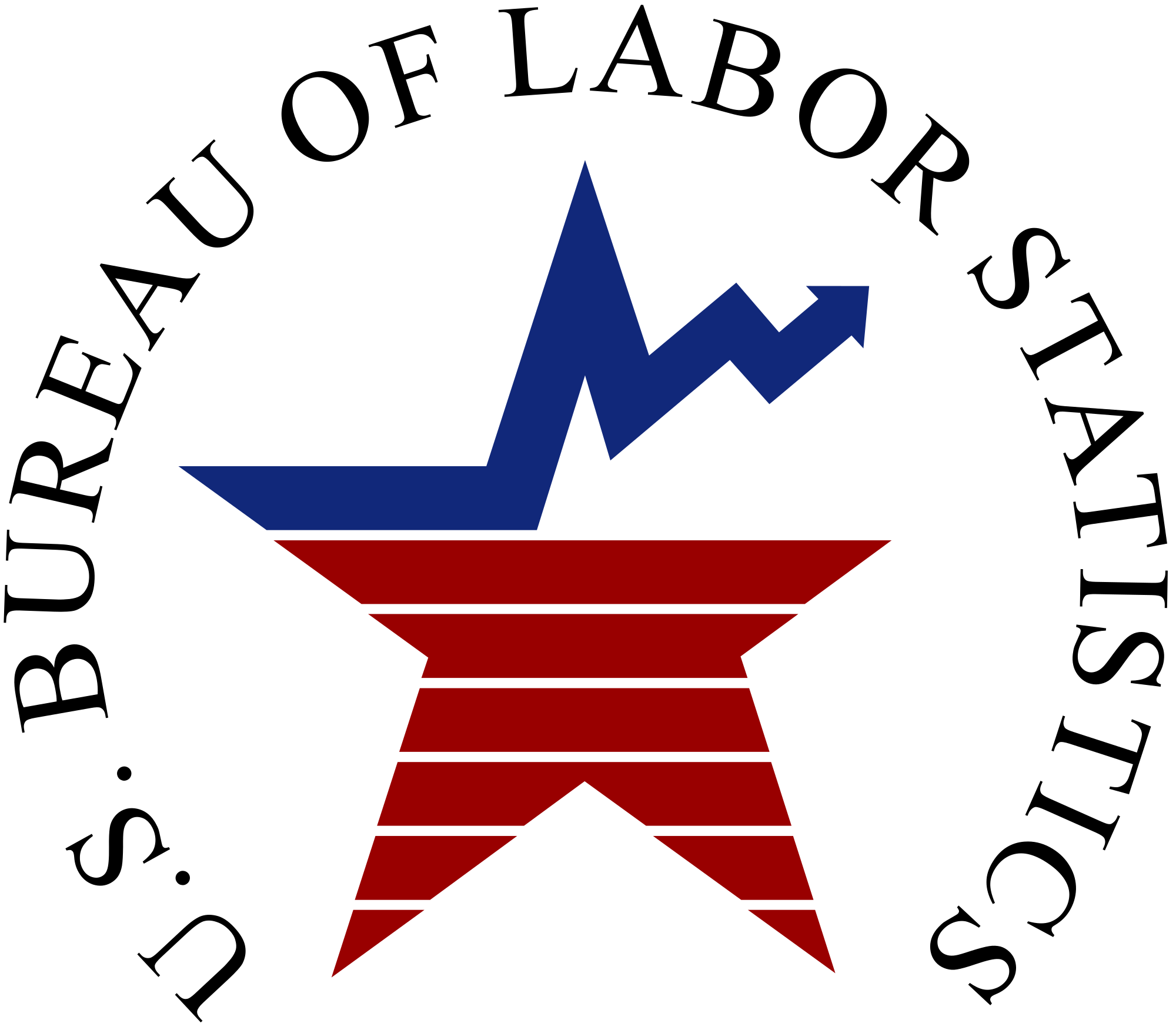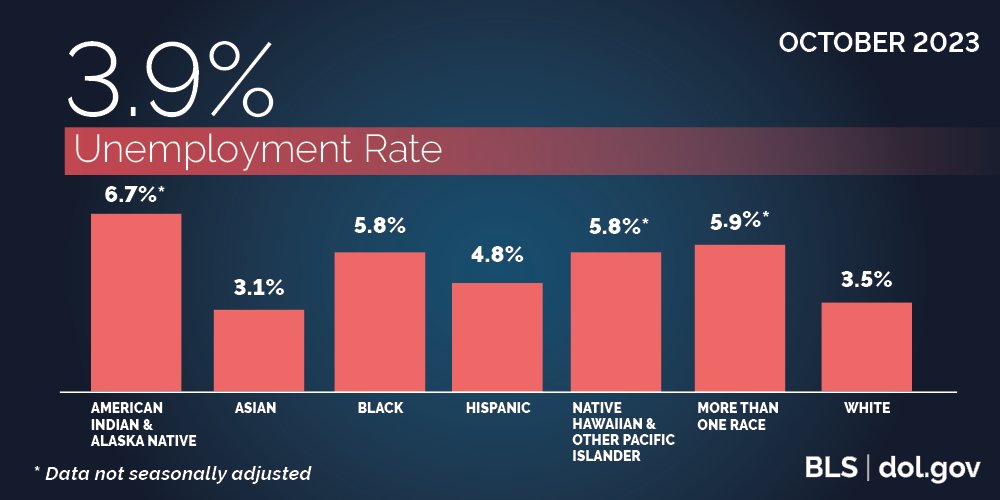
- President Biden’s Supersized Executive Order on AI Includes Directives for US DOL & Many Other Agencies
- DE Talk Podcast Explored Ways to Handle Workplace Drama
- NLRB & US DOL’s OSHA Signed Agreement to Enhance Information Sharing, Coordinated Investigations, Referrals, Training & Outreach
- Justice Department Issued New Guidance Providing Insights on Evolving Efforts to Accelerate ADA’s “Integration Mandate”
- OFCCP Announced New, Two-Step Complaint Process
- JOLTS Report – Job Openings Increased by only 56k in September, Rate Held Steady at 5.7%
- Economy Added only 150k Jobs in October, Unemployment Rate Rose Slightly to 3.9%
- In Brief
- New Publications
- Looking Ahead: Upcoming Date Reminders
Monday, October 30, 2023: President Biden’s Supersized Executive Order on AI Includes Directives for US DOL & Many Other Agencies
EO Contains 3 Sections with Specific Directives for US DOL

How Does the EO Define AI?
Section 3 (b) of the EO states:
“The term ‘artificial intelligence’ or ‘AI’ has the meaning set forth in 15 U.S.C. 9401(3): a machine-based system that can, for a given set of human-defined objectives, make predictions, recommendations, or decisions influencing real or virtual environments. Artificial intelligence systems use machine- and human-based inputs to perceive real and virtual environments; abstract such perceptions into models through analysis in an automated manner; and use model inference to formulate options for information or action.” (embedded link added)
Directives to the Secretary of Labor
While the E.O. makes no mention of the Equal Employment Opportunity Commission, it contains numerous specific directives to the U.S. Secretary of Labor.
Section 5 (e) provides:
“Within 45 days of the date of this order, for purposes of considering updates to the ‘Schedule A’ list of occupations, 20 CFR 656.5, the Secretary of Labor shall publish a request for information (RFI) to solicit public input, including from industry and worker-advocate communities, identifying AI and other STEM-related occupations, as well as additional occupations across the economy, for which there is an insufficient number of ready, willing, able, and qualified United States workers.”
Section 6 (a) (ii) states:
[Within 180 days of October 30, 2023 = April 27, 2024: NOTE: 2024 is a Leap Year] “[t]o evaluate necessary steps for the Federal Government to address AI-related workforce disruptions, the Secretary of Labor shall submit to the President a report analyzing the abilities of agencies to support workers displaced by the adoption of AI and other technological advancements.”
Sections 6 (a) (ii) (A) and (B) detail the minimum requirements for the report.
Section 6 (b) (i) directs the Secretary of Labor “to [in consultation with other agencies and with outside entities, including labor unions and workers, as the Secretary of Labor deems appropriate] develop and publish principles and best practices for employers that could be used to mitigate AI’s potential harms to employees’ well-being and maximize its potential benefits. The principles and best practices shall include specific steps for employers to take with regard to AI.”
Sections 6 (b) (i) (A) through (C) detail the minimum requirements for that report, which is due within 180 days of October 30, 2023). The minimum requirements include covering:
“(A) job-displacement risks and career opportunities related to AI, including effects on job skills and evaluation of applicants and workers;
(B) labor standards and job quality, including issues related to the equity, protected activity, compensation, health, and safety implications of AI in the workplace; and
(C) implications for workers of employers’ AI-related collection and use of data about them, including transparency, engagement, management, and activity protected under worker-protection laws.
(ii) After principles and best practices are developed pursuant to subsection (b)(i) of this section, the heads of agencies shall consider, in consultation with the Secretary of Labor, encouraging the adoption of these guidelines in their programs to the extent appropriate for each program and consistent with applicable law.
(iii) To support employees whose work is monitored or augmented by AI in being compensated appropriately for all of their work time, the Secretary of Labor shall issue guidance to make clear that employers that deploy AI to monitor or augment employees’ work must continue to comply with protections that ensure that workers are compensated for their hours worked, as defined under the Fair Labor Standards Act of 1938 […] and other legal requirements.”
Section 7.3 (a) requires the Secretary of Labor to, by October 30, 2024, […] publish guidance for Federal contractors regarding nondiscrimination in hiring involving AI and other technology-based hiring systems.
Other Notable Provisions
In addition to the specific directives for the Department of Labor, the EO requires the Chair of the Council of Economic Advisors to, within 180 days of October 30, 2023 (April 27, 2024), prepare and submit a report to the President on the labor-market effects of AI. (Section 6 (a)(i))
Editor’s Note: This report could significantly contribute to the reduction of federal agency budgets by projecting the fewer number of federal employees needed to perform existing functions, for example, as AI replaces the need for employees, especially analysts, report writers, managers, and customer service attendants.
The EO also contains specific assignments for the White House Office of Management and Budget (“OMB”), the Office of Personnel Management (“OPM”), the Consumer Financial Protection Bureau, the Department of Housing and Urban Development, the Department of Health and Human Services, the State Department, the Department of Homeland Security, the Department of Agriculture, the Department of Commerce, the National Institute of Standards and Technology (“NIST”), and the Department of Energy regarding non-discrimination, data privacy, security, and other matters. Furthermore, it contains instructions to the various agencies for supporting and guiding private industry. It also creates a “White House Artificial Intelligence Council” (Section 12).
Departmental Statements/Actions of Note
On Monday, the Department of Commerce/NIST released a statement and posted a webpage detailing their responsibilities under the E.O.
Wednesday, the OMB posted a 26-page proposed guidance to federal agencies on how they should implement Biden’s AI Executive Order. The OMB’s press release on this guidance is here. The guidance instructs federal agencies to name a chief AI officer to accelerate the adoption of AI tools within agencies and manage the associated risks. On Friday, the OMB published a Notice in the Federal Register to open a public comment period on this guidance. Comments are due on December 5, 2023, and you may submit them here.
Section 10.2 of the EO calls upon the OPM and other agencies to take the lead in planning “a national surge in AI talent in the Federal Government. On Wednesday, the OPM tweeted/posted a link on Twitter/X to a Federal News Network story detailing the OPM’s assignments to that end. Among other things, it notes that the AI.gov website contains a portal for potential job applicants to apply to different fellowship programs and federal government jobs to build and govern AI.
The AI.gov website also details the Biden Administration’s actions regarding AI, including the Blueprint for an AI Bill of Rights (see also our story here) and NIST’s AI Risk Management Framework (see also our story here.)
Senate Subcommittee Hearing
On Tuesday, the Employment and Workplace Safety Subcommittee within the U.S. Senate Committee on Health, Education, Labor, and Pensions Committee held an almost two-hour hearing on “AI and the Future of Work.” At the outset, Subcommittee Chair Senator John Hickenlooper (D-CO) mentioned the President’s new EO, stating “[t]his is just the beginning.”
Monday, October 30, 2023: DE Talk Podcast Explored Ways to Handle Workplace Drama
Leaders often have a lot on their plate, but their biggest challenge? Workplace drama. In this episode, we sit down with award-winning host of The Conscious Habit podcast, certified meditation coach, and President of Sandler Training Trustpointe, Amy Woodall, to discuss how calming the mind and focusing on the things we can control will help us own our part in the challenges we face, and how to get to the root of where results begin. She also shares her favorite podcasts and books to start your consciousness journey.
Click here to listen now!
Listen to our DE Talk Podcasts via any of the options below and subscribe to receive updates whenever a new podcast is available.
Apple • Spotify • Google • Stitcher • iHeartRadio • Stitcher • TuneIn • Overcast • Pocket Casts • Castro • Castbox • Podchaser • RSS Feed
…or your preferred Podcast provider!
Tuesday, October 31, 2023: NLRB & US DOL’s OSHA Signed Agreement to Enhance Information Sharing, Coordinated Investigations, Referrals, Training & Outreach
Agreement Focuses on Anti-Retaliation & Whistleblower Protections

Specifically, the MOU (pages 1-2) focuses on the following legal provisions:
- the National Labor Relations Act (“NLRA”) – Section 7 of the NLRA guarantees employees “the right to self-organization, to form, join, or assist labor organizations, to bargain collectively through representatives of their own choosing, and to engage in other concerted activities for the purpose of collective bargaining or other mutual aid or protection,” as well as the right “to refrain from any or all such activities” (see 29 U.S.C. § 157). Section 8(a)(1) of the NLRA makes it an unfair labor practice for an employer “to interfere with, restrain, or coerce employees in the exercise of the rights guaranteed in Section 7” of the Act (see 29 U.S.C. § 158); and
- the anti-retaliation provisions of the Occupational Safety and Health Act (“OSH Act”) including, but not limited to Section 11(c), 29 U.S.C. 660(c), of the OSH Act and any current and future statutory protections which OSHA is charged with enforcing, including various whistleblower provisions.
In addition, the agencies jointly issued a “Fact Sheet,” entitled “Building Safe & Healthy Workplaces by Promoting Worker Voice.”
MOU Expands on Previous Cooperative Efforts
“Because many worker efforts to improve safety and health in their workplaces are protected under both the [OSH Act and the NLRA], the NLRB and OSHA have historically engaged in cooperative efforts and have entered into formal Memoranda of Understandings to engage in interagency coordination since 1975,” the NLRB’s statement observed. Tuesday’s agreement “expands on the historic interagency coordination by enabling the NLRB and OSHA to closely collaborate by more broadly sharing information, conducting cross-training for staff at each agency, partnering on investigative efforts within each agency’s authority, and enforcing anti-retaliation provisions,” the NLRB continued.
The “MOU will bolster protections for workers to speak out about unsafe working conditions by strengthening coordination between OSHA and the NLRB on our enforcement efforts,” GC Abruzzo said in both statements.
“Our partnership with the National Labor Relations Board will expand both of our agencies’ impact and effectiveness in protecting workers who raise concerns about workplace violations or retaliation,” Assistant Secretary Parker commented.
OSHA Recently Proposed Union-Friendly Revisions to Rules on Employee Representatives for Safety Inspections
This new MOU comes on the heels of another OSHA action favorable to unions. In late August, OSHA proposed changes to its regulations that would allow a union representative to accompany an OSHA inspector during a “walkaround” at a nonunion worksite, regardless of whether the union representative is an employee of the organization undergoing inspection. For details on that pending proposal, see our story here.
OSHA extended the original October 30 deadline for public comments on that proposal to November 13, 2023. Thus far, the public has submitted over 1,120 comments on the proposal.
Tuesday, October 31, 2023: Justice Department Issued New Guidance Providing Insights on Evolving Efforts to Accelerate ADA’s “Integration Mandate”

In Olmstead v. L.C., 527 U.S. 581 (1999), the U.S. Supreme Court, interpreting the ADA’s integration mandate, held that Title II of the statute prohibits the unjustified segregation of individuals with disabilities. The High Court held that public entities are required to provide community-based services to persons with disabilities when (a) such services are appropriate; (b) the affected persons do not oppose community-based treatment; and (c) community-based services can be reasonably accommodated, considering the resources available to the entity and the needs of others who receive disability services from the entity.
“Nationally, however, many people with disabilities spend most of their time receiving public services in segregated settings like sheltered workshops and facility-based day programs,” the DOJ noted in its press release announcing the guidance.
The new guidance provides an overview of the ADA, the integration mandate, and the types of employment and day services that are often offered to people with disabilities. It then uses a question-and-answer format to cover nine points about how the ADA applies to those service systems. Among other points, the guidance explains:
- The most integrated employment setting under the ADA is the one that lets people with disabilities spend time with non-disabled people as much as possible. (Q&A Item #2)
- Q & A Item #3 discusses best practices to ensure that people with disabilities have access to competitive integrated employment.
- People with disabilities who receive services in segregated employment or day services settings should receive accurate information about integrated employment options. (Q&A Item #5)
Note that this new guidance complements and supplements – but does not supersede – the DOJ’s 2011 Olmstead guidance, “Statement of the Department of Justice on Enforcement of the Integration Mandate of Title II of the Americans with Disabilities Act and Olmstead v. L.C.”
Wednesday, November 1, 2023: OFCCP Announced New, Two-Step Complaint Process
OFCCP Will Not Inform Employers If Only Pre-Complaint Inquiry Filed
Pre-Complaint Inquiries Do Not Toll Applicable Timely Filing Periods
Changes Mimic EEOC Process, Intended to Improve Efficiency

OFCCP will use these two forms in sequence to provide the agency with a chance to first determine whether it properly has jurisdiction over a Complaint before engaging investigatory resources to determine the merits of the claim. OFCCP updated its Complaint Process webpage and its corresponding FAQ section to reflect these changes.
How Does the New Two-Step Process Work?
Step One. The new two-step process first requires that applicants and employees of contractors, their authorized representatives, or third parties submit to OFCCP the newly created CC-390 Pre-Complaint Inquiry Form providing basic information on the complainant’s allegation(s) and contact information. “A pre-complaint inquiry is not the same as filing a complaint,” OFCCP pointed out in its email announcement. “The pre-complaint inquiry allows employees and applicants to share their concerns about employment discrimination and can assist in determining if filing a complaint with OFCCP is the right choice,” OFCCP continued.
When OFCCP receives this Pre-Complaint Inquiry Form, the agency will then assess:
- whether the allegations are timely;
- whether the inquiry falls under OFCCP’s jurisdiction; and
- whether the inquiry should be investigated, closed, or referred to another agency.
If OFCCP then determines that it will refer the matter to another agency, OFCCP will provide the submitter with information on the referral and send a copy of the Pre-Complaint Inquiry Form to the other agency for review. If OFCCP determines that the allegations provided in the pre-Complaint inquiry are untimely or not within OFCCP’s authority, it will contact the submitter to explain why OFCCP will likely not investigate the matter if he/she/they were to file a Complaint with OFCCP.
Step Two. If OFCCP determines it has jurisdiction, the agency will then provide the inquiry submitter with information to file a Complaint with OFCCP using the revised Form CC-4. The revised Form CC-4 includes formatting changes (a) to make it consistent with the new “Pre-Complaint Inquiry” Form CC-390 and (b) to add clarifying revisions “to improve useability.” Employees and applicants may file this form online, in person, or by email, mail, or fax.
Important Notes. OFCCP’s FAQs provide some additional, important points about the new process including:
- Submitting a Pre-Complaint Inquiry Form to OFCCP does NOT extend the period for filing a Complaint. (See FAQ #5 which also details the applicable timely filing periods.)
- A Pre-Complaint Inquiry Form is NOT required to file a Complaint. Employees and applicants may choose to file a Complaint without first filing a Pre-Complaint Inquiry Form. (See FAQ #6.)
- OFCCP instructs employees or applicants who have 60 calendar days or fewer in which to file a timely Complaint, to NOT file a Pre-Complaint Inquiry form. Instead, they should file a Complaint using OFCCP’s online Complaint Filing Page. (See FAQ #5 and FAQ #6.)
- OFCCP will NOT notify the employer if an employee or applicant submits a Pre-Complaint Inquiry. (See FAQ #7.)
- However, OFCCP is required by law to notify the Contractor when an employee or applicant files a Complaint. (See FAQ #7.)
How We Got Here
On January 18, 2023, OFCCP published its 60-day Notice of the proposal. At that time, we posted a detailed story on that initial proposal, including a discussion of OFCCP’s 13-page Supporting Statement submitted to the White House Office of Management and Budget (“OMB”) explaining in detail what OFCCP was proposing and why. In that Supporting Statement, OFCCP pointed out that the U.S. Equal Employment Opportunity Commission (“EEOC”) “has long utilized a two-step intake process.” We noted in our January story that OFCCP, unlike the EEOC, is not legally required to investigate every Complaint filed with the agency. Thus, the new two-step process will not trigger OFCCP’s mandatory investigation Rules with a complainant’s filing of just a CC-390 (Pre-Complaint Inquiry) form. This will be a boon to contractors since the use of the CC-390 form should avoid many otherwise non-jurisdictional Complaint investigations.
We also explained in our January story, that in its Supporting Statement for its initial proposal (on page 5), that OFCCP reported that it would not be required to provide notice to Contractors, in its view, when an individual decides not to file a Complaint. “This will also benefit employers, so that they are not unnecessarily notified of a matter that the agency will not investigate,” OFCCP claimed.
The 60-day comment period closed on March 20, 2023, with three public comments submitted. On April 28, 2023, OFCCP published a follow-up Federal Register Notice of a 30-day comment period on this proposal (as required by the Paperwork Reduction Act). For the 30-day comment period, OFCCP made three minor changes in the proposal, detailed in our story here. At that time, OFCCP also submitted to OMB a new 15-page OFCCP “Supporting Statement” in which the OFCCP addressed the three public comments submitted in response to the 60-day notice. The deadline for comments on the 30-day Notice closed on May 30, 2023, with one comment submitted.
In June, the OMB approved OFCCP’s modified proposal. However, OMB’s “Notice of Action” approving the request stated that: “OFCCP will continue to use its current complaint form until October 31, 2023, while the agency upgrades its electronic systems for complaint intake and translates the new forms into additional languages.” (See our story here.) On September 30, 2023, the OMB approved for three years (until September 30, 2026) multiple foreign language translations of the two forms, detailed in a statement submitted to the OMB on September 19. The OMB’s approval for the new two-step process will expire on June 30, 2026.
Wednesday, November 1, 2023: JOLTS Report – Job Openings Increased by only 56k in September, Rate Held Steady at 5.7%

In September, job openings increased in accommodation and food services (+141,000) and in arts, entertainment, and recreation (+39,000). Job openings decreased in other services (-124,000), the federal government (-43,000), and information services (-41,000).
Hires & Other Separations Up, Total Separations, Quits & Layoffs/Discharges Down
The number of hires in September was 5,871,000 compared to the adjusted 5,850,000 number for August (+21,000). The rate held steady at 3.7 percent for the third month in a row. The number of hires changed little in all industries.
Total separations were 5,530,000 for September, compared to 5,687,000 for August (-157,000). The rate decreased to 3.5 percent from the 3.6 percent rate in August. Over the month, the number of total separations decreased in state and local government education (-42,000) and in nondurable goods manufacturing (-37,000) but increased in the federal government (+8,000).
Within separations, quits in September were 3,661,000 down a bit from 3,663,000 in August (- 2,000). The rate was 2.3 percent for the third consecutive month. The number of quits increased in information (+24,000) but decreased in state and local government, excluding education (-15,000).
Layoffs and discharges in September were 1,517,000, down from 1,682,000 in August (-165,000). The September rate decreased slightly to 1.0 compared to 1.1 in August.
The number of other separations was 352,000 in September, up from 342,000 in August (+10.000). The percentage rate remained steady at 0.2.
BLS posted interactive graphs here.
Three-Month Comparison Chart of Job Openings vs. Jobs Filled
Our below table reports the number of available jobs (as taken from the revised JOLTS reports) from the last four months of available data, as revised. After the availability of jobs shrank for two months in June and July, August saw a massive rebound, again equaled, and increased in September. This job strength demonstrated a strong economy sufficiently robust to grow despite both high interest rates and again growing inflation fueled by billions of dollars of Infrastructure monies approved in 2021 that the federal government is just now releasing into the private marketplace.
| Reports | June | July | August | September |
|
JOLTS available jobs Prior/mo. comparison |
9,165,000 (451,000 < May)* |
8,920,000 (245,000 < June) |
9,497,000 (577,000 > July) |
9,553,000 (56,000 > August) |
*May Job Openings were 9,616,000
Note: BLS is scheduled to release the JOLTS Report for October 2023 on Tuesday, December 5, 2023.
Wednesday, November 1, 2023: JOLTS Report – Job Openings Increased by only 56k in September, Rate Held Steady at 5.7%

Job gains occurred in health care, government, and social assistance. Employment declined in manufacturing due to strike activity. Both the short-term unemployment rate, at 3.9 percent, and the number of unemployed persons, at 6,506,000, changed little in October. However, since their recent lows in April, these measures are up by 0.5 of a percentage point and 849,000, respectively, the BLS pointed out.
The labor force participation rate, at 62.7 percent, and the employment-population ratio, at 60.2 percent, both changed little in October. Those percentages were 62.8 and 60.4 respectively in September.
The number of short-term unemployed persons was 6,506,000 in October, up by 146,000 from the 6,360,000 figures in September. The number of long-term unemployed (those jobless for 27 weeks or more) was 1,282,000 (19.8 percent of the total unemployed), which was up by 66,000 from September’s figure of 1,216,000 (19.1 percent of the total unemployed). So, over 200,000 persons became unemployed in the U.S. last month.
Major Worker Groups
The BLS/DOL charts below illustrate the numbers by race and ethnicity (not seasonally adjusted):
Our table below compares the major worker groups’ numbers from the last three months of available data:
|
The Employment Situation – October 2023 |
||||
| Unemployment Rate |
August 2023 |
September 2023 |
October 2023 | Feb 2020 Pre-Pandemic |
| National (Seasonally adjusted) |
3.8% | 3.8% | 3.9% | 3.5% |
| White | 3.4% | 3.4% | 3.5% | 3.0% |
| Black | 5.3% | 5.7% | 5.8% | 6.0% |
| Asian | 3.1% | 2.8% | 3.1% | 2.5% |
| Hispanic (Seasonally adjusted) |
4.9% | 4.6% | 4.8% | 4.4% |
| Native Hawaiians & Other Pacific Islanders | 5.7% | 2.6% | 5.8% | 2.7% |
| Two or More Races (Not seasonally adjusted) |
6.7% | 5.8% | 5.9% | 6.1% |
| Men (20+) | 3.7% | 3.8% | 3.7% | 3.2% |
| Women (20+) (Seasonally adjusted) |
3.2% | 3.1% | 3.3% | 3.1% |
| Veteran (Not seasonally adjusted) |
3.6% | 3.5% | 2.7% | 3.7% |
| Individuals with Disabilities (Not seasonally adjusted) |
7.4% | 7.3% | 7.4% | 7.8% |
See Also:
- BLS has additional, interactive graphs available here
- President Biden’s remarks
- Acting Secretary of Labor Julie Su’s statement
- White House Counsel of Economic Advisers’ blog
- USDOL video short illustrating the report
In Brief
Tuesday, October 31, 2023: U.S. EEOC Opened 2022 EEO-1 Component 1 Data Collection

New Publications
Friday, November 3, 2023: US DOL’s Employment and Training Administration issued a Training and Employment Guidance Letter on “Complying with Nondiscrimination Requirements: Discrimination Based on Actual or Perceived Religion, Shared Ancestry, or Ethnic Characteristics are Prohibited Forms of Discrimination in the Workforce Development System.”
Looking Ahead:
Upcoming Date Reminders
There is one NEW item added to our calendar this week:
June 2023: U.S. DOL WHD’s current target date (now overdue) to publish its Final Rule on Nondisplacement of Qualified Workers Under Service Contracts (RIN: 1235-AA42)
June 2023: U.S. OSHA’s current target date (now overdue) to publish its Final Rule on Occupational Exposure to COVID-19 in Healthcare Settings (RIN: 1218-AD36)
August 2023: U.S. DOL WHD’s (now overdue) target date for its Final Rule on Employee or Independent Contractor Classification Under the Fair Labor Standards Act (RIN: 1235-AA43)
August 2023: U.S. NLRB’s (now overdue) target date for its Final Election Protection Rule (RIN: 3142-AA22)
August 2023: U.S. DOL’s OASAM’s (now overdue) target date to publish Proposed Rule on “Revision of the Regulations Implementing Section 188 of the Workforce Innovation and Opportunity Act (WIOA) to Clarify Nondiscrimination and Equal Opportunity Requirements and Obligations Related to Sex” (RIN: 1291-AA44)
November 6, 2023: Effective Date of FAR Council’s Final Rule to enhance whistleblower protections for federal contractor employees
November 7, 2023: Comments due on U.S. DOL WHD’s proposal to revise its FLSA regulations on the exemptions from minimum wage and overtime pay requirements for executive, administrative, & professional employees
November 13, 2023: Deadline for comments on OSHA’s union-friendly proposal to revise its Worker Walkaround Representative Designation Process (previous October 30 deadline extended)
November 15, 2023 (5:30 pm – 7:00 pm ET): US DOL ODEP’s third “stakeholder engagement session” on Section 14(c) subminimum wage program; for more information, see our story here.
November 20, 2023: Deadline for comments on the Census Bureau’s Proposal to Test Questions on Sexual Orientation & Gender Identity for the American Community Survey
November 27, 2023: Comments due on the U.S. Office of Personnel Management’s Interim Final Rule to extend the eligibility date for noncompetitive appointment of military spouses married to a member of the armed forces on active duty through December 31, 2028
December 5, 2023: Submission deadline for EEO-1 Survey Component 1 Data Collection (collection period opened on October 31, 2023)
NEW December 5, 2023: Comments due on the White House Office of Management and Budget’s proposed guidance to federal agencies on how they should implement Biden’s Executive Order on Artificial Intelligence
December 26, 2023: NLRB’s Direct Final Rule revising its procedures governing representation elections takes effect
December 26, 2023: Effective date of NLRB’s Final Rule on Standard for Determining Joint-Employer Status (under the NLRA)
December 29, 2023: Statutory deadline for EEOC to finalize regulations to enforce the Pregnant Workers Fairness Act
December 2023: OFCCP’s current target date for its Notice of Proposed Rulemaking to “Modernize” Supply & Service Contractor Regulations (RIN: 1250-AA13)
December 2023: OFCCP’s current target date for its Final Rule on “Technical Amendments” to Update Jurisdictional Thresholds & Remove Gender Assumptive Pronouns (RIN: 1250-AA16)
January 1, 2024: U.S. DOL OSHA’s Final Rule Requiring Covered High-Hazard Industry Employers to Electronically Submit Injury & Illness Records takes effect
April 3 – April 5, 2024: DEAMcon24 New Orleans
January 1, 2024: The minimum wage for federal contracts covered by Executive Order 13658 (“Establishing a Minimum Wage for Contractors”) (contracts entered into, renewed, or extended prior to January 30, 2022), will increase to $12.90 per hour, and the minimum cash wage for tipped employees increases to $9.05 per hour (See our story here detailing exceptions)
January 1, 2024: The minimum wage for federal contractors covered by Executive Order 14026 (“Increasing the Minimum Wage for Federal Contractors”) (contracts entered into on or after January 30, 2022, or that are renewed or extended on or after January 30, 2022), will increase to $17.20 per hour, and this minimum wage rate will apply to non-tipped and tipped employees alike (See our story here detailing exceptions)
June 2024: OFCCP’s current target date for its Notice of Proposed Rulemaking to Require Reporting of Subcontractors (RIN: 1250-AA15)
THIS COLUMN IS MEANT TO ASSIST IN A GENERAL UNDERSTANDING OF THE CURRENT LAW AND PRACTICE RELATING TO OFCCP. IT IS NOT TO BE REGARDED AS LEGAL ADVICE. COMPANIES OR INDIVIDUALS WITH PARTICULAR QUESTIONS SHOULD SEEK ADVICE OF COUNSEL.
SUBSCRIBE.
Subscribe to receive alerts, news and updates on all things related to OFCCP compliance as it applies to federal contractors.
OFCCP Compliance Text Alerts
Get OFCCP compliance alerts on your cell phone. Text the word compliance to 18668693326 and confirm your subscription. Provider message and data rates may apply.



